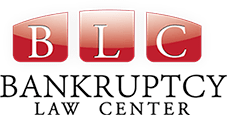California Bankruptcy Law
If you are on the verge of bankruptcy, it might seem like everything is happening way too fast. Even though you may be dealing with an emotional whirlwind on the inside, it is important to slow down and examine the facts. When you understand how Bankruptcy Law is handled in the state of California, it becomes much easier to plan out your next move.
Many people may have certain assumptions about bankruptcy in California. The lack of knowledge in this area can prevent people from making an informed financial decision. When you take a step back and learn a little bit more about California bankruptcy law, you may realize that things are not as bad as you think. With the right legal help, you can take advantage of the available options to reach a sense of relief.
What You Need to Know About California Bankruptcy Law
The first thing you need to know about bankruptcy is that it is governed by federal law. This federal law is known as the Bankruptcy Code. This means that for the most part, Bankruptcy is a universal, standardized process that remains the same from state to state.
That being said, California handles bankruptcy law in a few unique ways – mostly in terms of certain procedures and the administrative process. As you will soon find out, there is a lot of paperwork involved in declaring bankruptcy. Although it is possible to fill out these forms by yourself, it becomes much easier when you enlist the help of a legal professional.
The purpose of these forms is not only to collect your financial information, but also to make it public. This means that your bankruptcy will always be publicly filed away, and anyone could potentially find these records if they wanted to. On the other hand, California is an incredibly large state, and millions of bankruptcy cases are filed each year. Someone would only be able to discover your bankruptcy records if they were specifically looking for them.
California has four different bankruptcy courts:
- Eastern District: This bankruptcy court governs Sacramento, Bakersfield, Modesto, and Fresno
- Northern District: This court governs Oakland, San Jose, Santa Rosa, and San Francisco
- Central District: This court is responsible for Los Angeles, Riverside, Santa Ana, Santa Barbara, and the San Fernando Valley region.
- Southern District: This court governs San Diego and the Imperial Counties.
What is Chapter 7 Bankruptcy in California?
Also known as a “straight bankruptcy,” Chapter 7 bankruptcy allows individuals to clear their debts after selling their assets through the bankruptcy court. Many of these assets are exempt, which means that bankruptcy court is not allowed to touch them. For most individuals, Chapter 7 bankruptcy can help them deal with a significant portion of their debt.
In California, you must pass something called a “means test” in order to declare Chapter 7 bankruptcy. This is only necessary if you earn more than the median income in California. The means test requires you to subtract your expenses from your income to determine whether you are allowed to declare Chapter 7 bankruptcy.
California Bankruptcy Exemptions
While there are some unique aspects when it comes to bankruptcy forms in California, the most important distinction is the way this state handles exemptions. Exemptions are assets that cannot be liquidated (taken away by the Bankruptcy Court).
The state of California actually offers you two options when it comes to exemptions. These two different “systems” are essentially lists of assets that are exempt under Bankruptcy law. Keep in mind that you cannot pick and choose assets from either list, as you need to select only one “system” when declaring bankruptcy in California.
System One
- Homestead: Any property worth under $75,000 if you are single and not disabled. This could include a condo, a boat, a mobile home, or essentially any other property where you live. This dollar value increases based on a number of factors, such as if you are a family, if you earn less than a certain amount, or if you are over a certain age.
- Personal Property: These assets are essentially what you need to survive. They include things like clothes, appliances, food, personal injury compensation, and even your burial plot.
- Insurance: Under system one of California’s bankruptcy exemptions, you will not have to give up your insurance when you file for bankruptcy.
- Pensions: You will not lose your pension under system one of California’s bankruptcy exemptions.
- Tools of Trade: If you need your tools to earn an income, they will not be taken away when you declare bankruptcy.
- Wages: Under system one, you will always be entitled to a minimum of 75% of your wages after declaring bankruptcy.
System Two
- Homestead: Any property up to a value of $29,275
- Personal Property: A wide range of items including animals, crops, books and musical instruments with a value of $450 each. You can also keep up to $1,150 worth of jewelry.
- Insurance: Like system one, you can keep your insurance when declaring bankruptcy.
- Child Support: You are still entitled to child support payments under system two.
- Tools of the Trade: Any tools you need to continue working and earning a living.
- Wages: Under System two, you are not entitled to any of your wages
- Wild Card: Under system two, you are allowed to exempt any property worth $925 or under.
In order to decide which system is best for you, you need to carefully examine each list with a legal professional. They will help you make the right decision so your bankruptcy can be as manageable as possible.
Motor Vehicle Exemptions for Chapter 7 Bankruptcy in California
Many people are worried about losing their vehicle when they declare bankruptcy, but California allows you to exempt this asset, as well. Here is how motor vehicles are handled in terms of California bankruptcy law:
- System One: The maximum amount that you can exempt for one motor vehicle asset is less when you choose system one. Homeowners tend to accept this sacrifice for a larger exemption on their property when choosing system one.
- System Two: The maximum amount you can exempt for one motor vehicle is higher when you choose system two. This is why system two is popular for renters who want to keep hold of their car.
Taking the Next Steps
Now that you have learned more about bankruptcy in California, it is time to take the next step. Located in Vista, the Southern California Bankruptcy Law Center is ready to assist you as you deal with this financial hurdle. Reach out today, and we can help you move forward.





